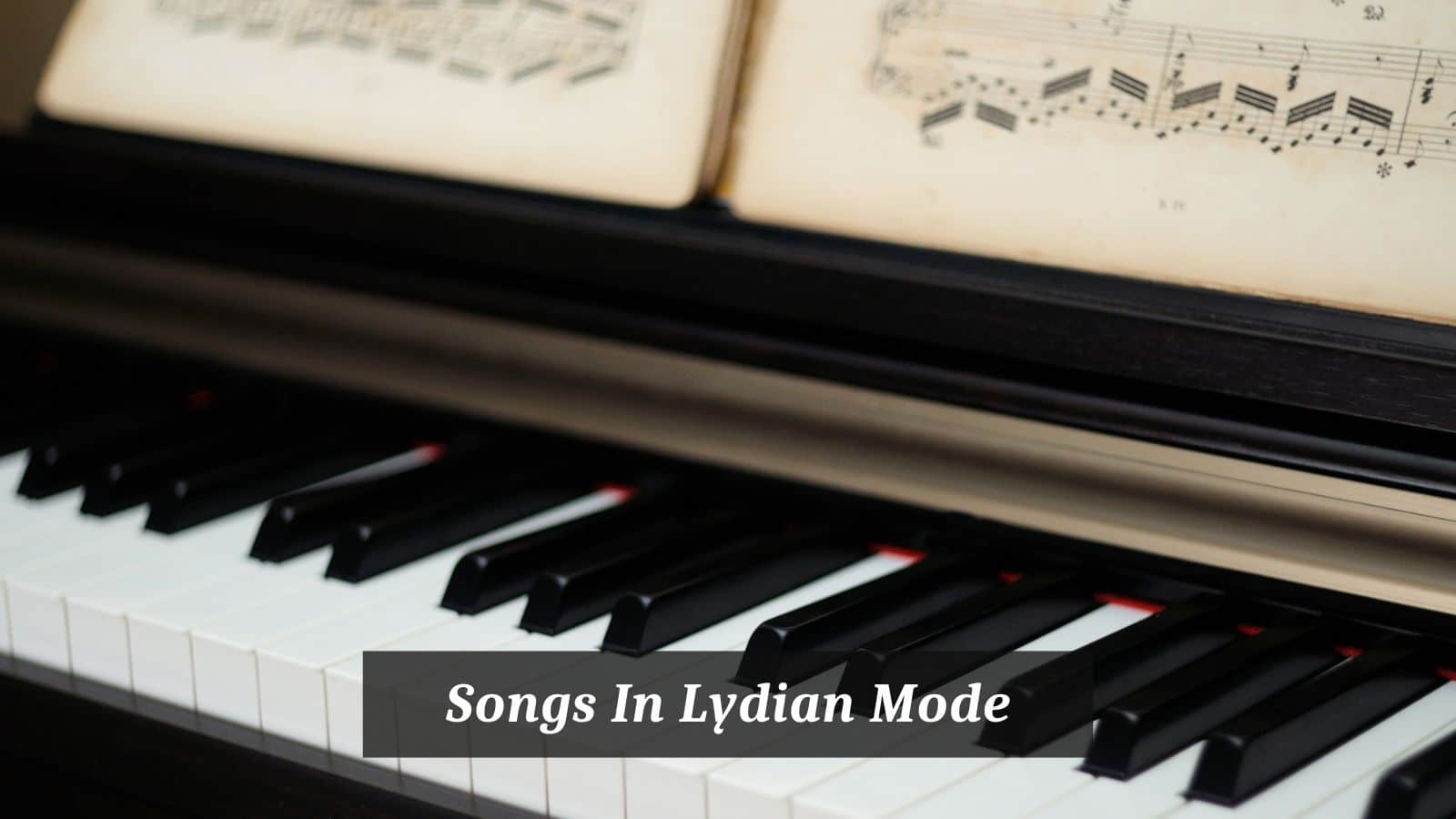
In Western music, the diatonic major and minor scales are mainly used for composing music. However, within these scales are also seven modes. The term ‘mode’ is derived from the Latin for ‘manner or way,’ yet all musical modes developed in ancient Greece and hence have Greek names.
Today, we’ll go on a historical journey to investigate seven pieces of music in the Lydian mode, from ancient to contemporary music, highlighting some iconic pieces that use the Lydian mode. But first, let’s briefly look at the characteristics of the Lydian mode.
A Bit of History
Because Greek musical theorists were philosophers as well and related the arts with moral dimensions, the modes were called after various areas, maybe to reflect the people who lived there.
Long before humans thought of pieces of music having ‘keys,’ they said each mode to have begun on a distinct note of the scale, lending its unique character to the set of notes.
The seven modes are Ionian, Dorian, Phrygian, Lydian, Mixolydian, Eolian, and Locrian. Some are major modes, some are minor, and some are dubious. Some modes are gloomier, others religious, or brighter than others.
What is the Lydian Mode?
We’ve mentioned that the modes start with the Ionian mode, which is essentially a C major scale:

The Lydian mode has a raised or augmented fourth (F♯) when written on C, but when we move to F, the B♭is raised and is not shown with its usual flat sign because it is augmented. You can look here at the Lydian mode formed on different starting notes.
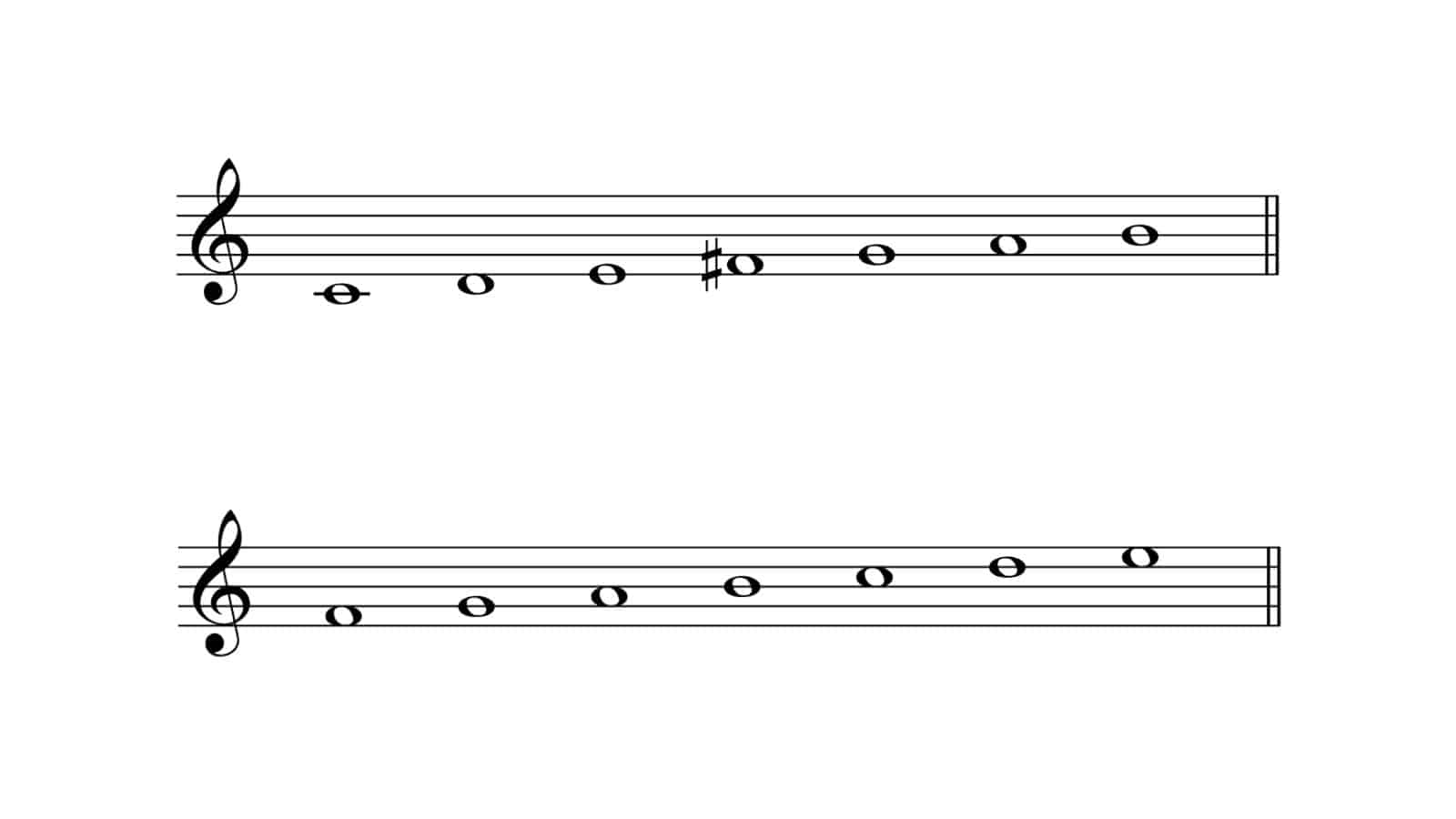
Songs In The Lydian Mode
There are many songs in the Lydian mode, but unfortunately, we cannot investigate them all. We’ve compiled a list to show you a wide variety of music and video links so you can discover this fantastic mode on your own.
1. Ancient Greece
We start our journey in ancient Greece with the Ancient Greek Music Ensemble Synavlia—a modern musical ensemble composed of Stefania Gatsakou, Petros Tabouris, and Petros Tampouris.
Their song The Bee, composed in Ancient Greek Lydian style, is an excellent example of how the ancient Lydian songs may have sounded if we had performed them with period instruments.
The lyre is an ancient forerunner of the contemporary acoustic guitar, the seistron, a rattle. Melodic chimes, and the aulos, an old form of a clarinet or oboe, are all featured in this work.
2. Hymn to St. Magnus—Orkney Islands, ca. 13th Century
This hymn in F Lydian was written in the 13th Century for the Earl of Orkney, subsequently, St. Magnus, who was slain by his Norwegian cousin, Hakon, in 1116.
The song has a markedly joyful atmosphere compared to many other medieval post-mortem memorial works. Unlike a typical requiem, this memorial song employs the bright Lydian mode to convey thankfulness for the Earl’s Christian efforts and guidance throughout his lifetime.
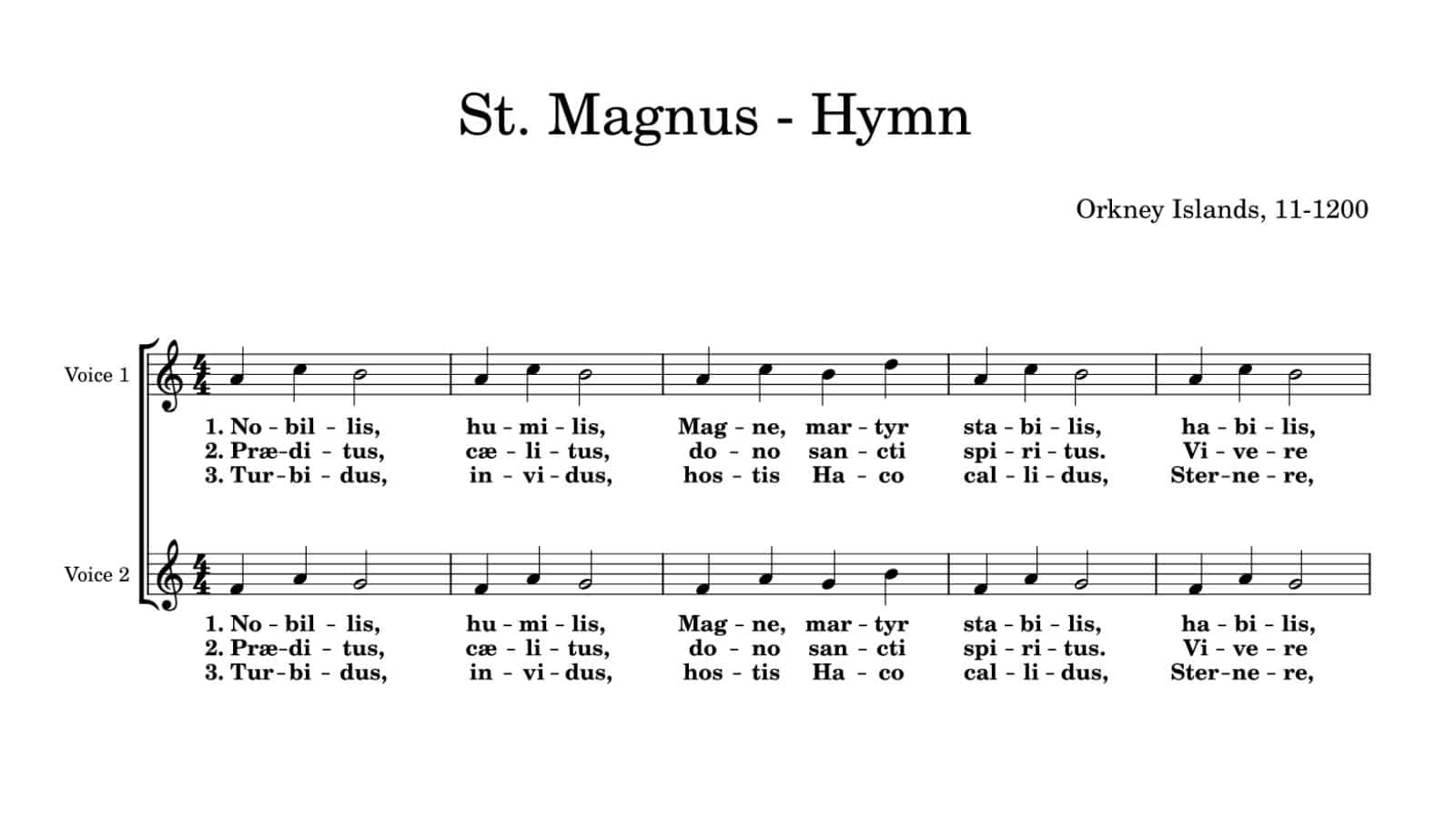
3. Guilielmus Messaus—Nato nobis Salvatore (1621)
Guilielmus Messaus (1589–1640) was a Flemish composer well-known for his cantiones, natalitiae, or Christmas songs.
The Nato Nobis Salvatore (Now that our Savior is born) has stood the test of time as an example of the church’s appreciation for Lydian-style melodies. The Lydian mode was prevalent in religious music during the Advent, Christmas, and Easter joyful seasons.
4. JS Bach, Chorale: Es ist Genug, BWV 60.5 (1723)
The chorale, Est ist Genug, BWV 60.5, is the fifth movement from Bach’s cantata O Ewigkeit, du Donnerwort, BWV 60 (full performance here). Est ist Genug, meaning ‘It is Enough,’ opens in A major with the first four notes of the Lydian mode on A.
The chorale’s initial three notes climb a whole tone, resulting in a tritone: a severely dissonant interval.
However, although this interval is now commonly dreaded as the ‘devil in music,’ it may be understood here as a great desire that breaches all worldly norms in order to climb to heaven. You can read an in-depth analysis of the work here.
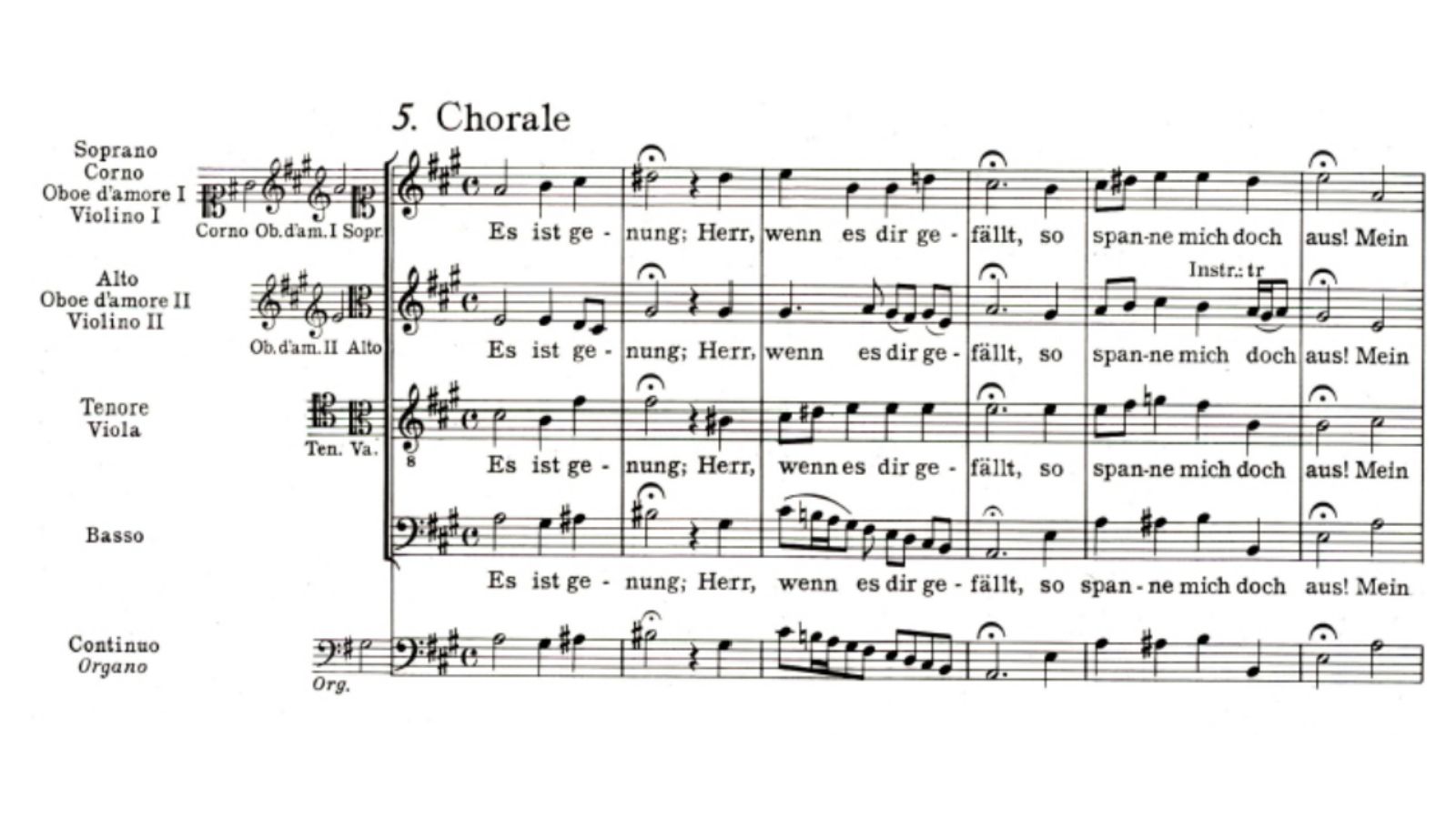
5. Beethoven, String Quartet No. 15 in A Minor Op. 132, Third Movement (1825)
The third movement of Beethoven’s String Quartet No. 15 is subtitled: “Song of Thanksgiving to God for recovery from illness in the Lydian mode.” Some scholars widely regard this movement in the Lydian mode as one of Beethoven’s most significant works.
This movement resonates with a diary note Beethoven penned during his illness, noting, “for God, time absolutely does not exist.”
Despite the string quartet’s A minor key, the third movement effectively includes the Lydian mode, giving the third movement a distinctively bright sense in contrast to the work’s overall melancholy tone.
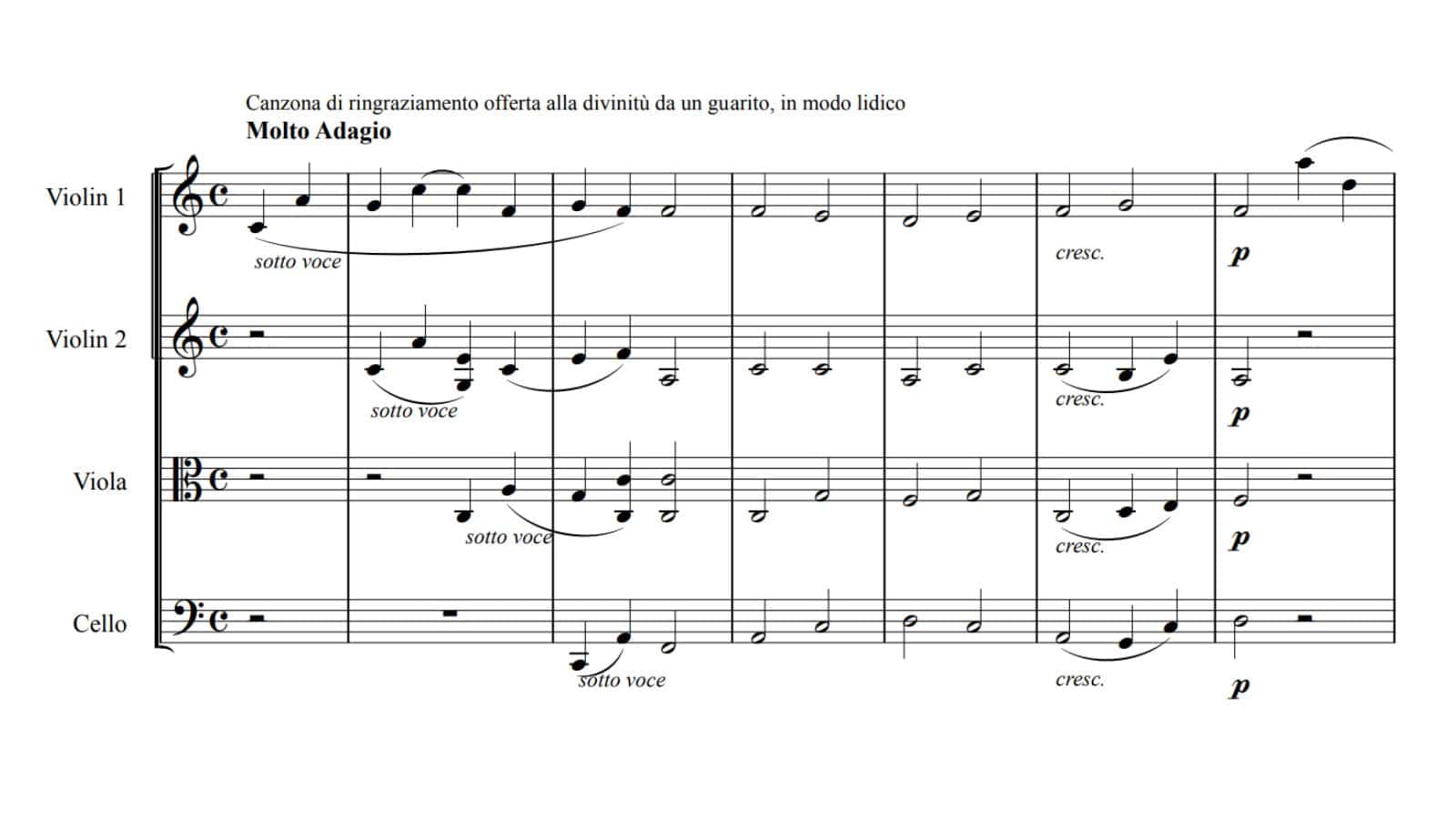
6. Danny Elfman—The Simpsons theme (1989)
The Simpsons theme opens with the Lydian raised fourth, used in the next theme.
Elfmann also shows that he is a good student of Bartok by including the note B♭ later on, creating the same mixed mode sense as in Romanian Dance No.6. Here’s the Simpsons theme in its entirety.

7. Legend of Zelda (2010)
No list would be complete without mentioning the Legend of Zelda soundtrack. Despite the poor sound quality compared to contemporary gaming soundtracks, this is perhaps the first soundtrack to contain an immersive soundtrack.
The original RPG’s running theme is primarily written in Lydian style, demonstrating to subsequent game creators the importance of an inspirational motif in keeping young players involved.
Conclusion
We hope you liked your journey into the realm of the Lydian mode. We’ve discussed the Lydian mode’s employment in works ranging from ancient through the medieval and classical periods to contemporary theme stylings.
We’ve also looked at how the Lydian mode can sometimes symbolize feelings of joy or yearning.
Further Examples to Explore
